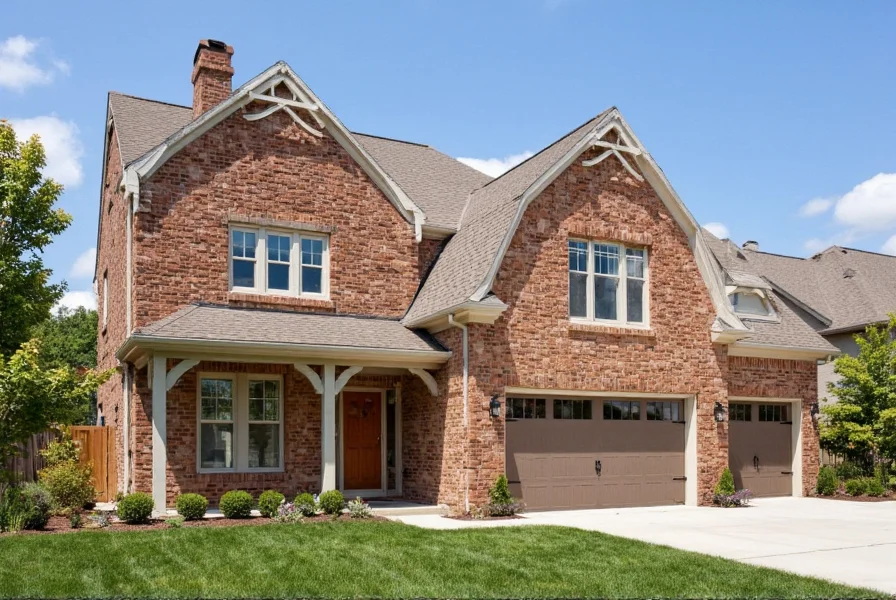If you've searched for \"ginger houser\" expecting information about a specific concept, you're likely looking for details about traditional Thai \"ginger house\" architecture. This common misspelling leads many to valuable information about Southeast Asia's remarkable wooden building traditions that have stood for centuries.
Understanding Traditional Ginger House Architecture
Ginger houses represent one of Thailand's most sophisticated architectural achievements. These structures emerged during the Ayutthaya period (1351-1767) and reached their artistic peak in the Rattanakosin era (1782-present). Unlike ordinary wooden buildings, authentic ginger houses showcase extraordinary craftsmanship where master carpenters created complex interlocking joints without using nails.
The name \"ginger house\" derives not from the spice but from the intricate, branching patterns in the woodwork that resemble ginger root formations. These houses served as residences for nobility and wealthy merchants, reflecting both social status and deep cultural values.
Key Architectural Features
Ginger houses incorporate several distinctive elements that demonstrate advanced engineering for their time:
| Architectural Element | Function | Cultural Significance |
|---|---|---|
| Elevated Structure | Protection from flooding and wildlife | Symbolizes spiritual elevation above earthly concerns |
| Intricate Wood Carvings | Structural reinforcement and decoration | Represents harmony with nature and Buddhist cosmology |
| Steep Roof Pitch | Effective rainwater runoff | Mimics mountain peaks, connecting to spiritual realms |
| Modular Design | Easy repair and expansion | Reflects Buddhist principles of impermanence |
Construction Techniques That Defy Time
The remarkable durability of traditional ginger houses stems from sophisticated building methods developed over generations. Master builders employed complex joinery techniques where wooden components fit together like three-dimensional puzzles. These connections actually strengthen over time as the wood settles.
Artisans carved decorative elements directly into structural components, creating what experts call \"functional ornamentation.\" This approach differs from Western architecture where decoration typically gets added after structural elements are complete. In traditional Thai ginger house construction, beauty and function exist as a single integrated concept.
Where to Experience Authentic Ginger Houses
Several locations in Thailand preserve these architectural treasures for public viewing:
- The Jim Thompson House in Bangkok - Perhaps the most famous example, showcasing six traditional Thai structures assembled from different regions
- Baan Sao Chaliang in Ayutthaya - One of Thailand's oldest surviving wooden structures dating to the late 19th century
- Chiang Mai's Lanna-style houses - Northern Thailand features regional variations with distinct decorative motifs
- The Ban Chang Pier House in Phuket - Demonstrates how ginger house techniques adapted to southern coastal environments
Preservation Challenges and Modern Adaptations
Traditional ginger house construction faces significant challenges in the modern era. Skilled artisans capable of executing the complex joinery techniques are increasingly rare, with fewer than 100 master craftsmen remaining in Thailand. Additionally, the specific types of hardwood traditionally used have become scarce due to logging restrictions.
Despite these challenges, contemporary architects are finding innovative ways to preserve this heritage. Some modern applications include:
- Using sustainable wood alternatives while maintaining traditional joinery methods
- Incorporating ginger house design elements into eco-resorts and boutique hotels
- Creating scaled-down versions for urban settings that maintain key aesthetic features
- Developing digital archives of traditional patterns for future generations
Cultural Significance Beyond Architecture
Ginger houses represent more than just buildings—they embody Thai philosophical concepts. The elevated design reflects Buddhist principles of rising above worldly concerns. The intricate woodwork demonstrates the Thai concept of \"sanuk\" (finding joy in work), as artisans transformed functional elements into artistic expressions.
These structures also illustrate Thailand's historical relationship with nature. Builders selected materials based on lunar cycles when sap content was lowest, ensuring greater durability. The orientation of houses followed principles from Thai geomancy to maximize natural light and ventilation while minimizing exposure to monsoon rains.
Frequently Asked Questions
What is the difference between a ginger house and regular Thai wooden architecture?
Ginger houses represent the highest expression of traditional Thai wooden architecture, featuring significantly more intricate carvings and complex joinery than ordinary wooden structures. While all Thai wooden houses share certain design principles, ginger houses specifically showcase master-level craftsmanship with ornate decorations that serve both structural and aesthetic purposes.
Why don't ginger houses use nails in their construction?
Traditional ginger houses avoid nails because Thai master builders developed sophisticated joinery techniques that create stronger, more flexible connections. These wooden joints actually tighten over time as the wood settles, allowing structures to withstand earthquakes and seasonal changes better than nailed constructions. The absence of metal also prevents corrosion in Thailand's humid climate.
How long do traditional ginger houses last?
Properly maintained traditional ginger houses can last 100-200 years. The oldest surviving examples date back to the late 19th century. Their longevity comes from using durable hardwoods like teak, the sophisticated joinery that allows for component replacement, and design features that protect against Thailand's tropical climate including elevated structures and overhanging roofs.
Can I visit authentic ginger houses in Thailand?
Yes, several authentic ginger houses are open to visitors in Thailand. The Jim Thompson House in Bangkok is the most famous example, featuring six traditional Thai structures assembled from different regions. Other notable sites include Baan Sao Chaliang in Ayutthaya, various Lanna-style houses in Chiang Mai, and the Ban Chang Pier House in Phuket. Many cultural centers and historical parks also preserve these architectural treasures.
Why is it called a ginger house when it has nothing to do with ginger?
The name comes from the intricate, branching patterns in the woodwork that resemble ginger root formations. Early Western visitors to Thailand noticed how the complex carvings and structural elements spread through the buildings like ginger roots, leading to the term \"ginger house\" despite no actual connection to the spice. The Thai name for these structures translates to \"teak house\" or \"traditional wooden house.\"











 浙公网安备
33010002000092号
浙公网安备
33010002000092号 浙B2-20120091-4
浙B2-20120091-4